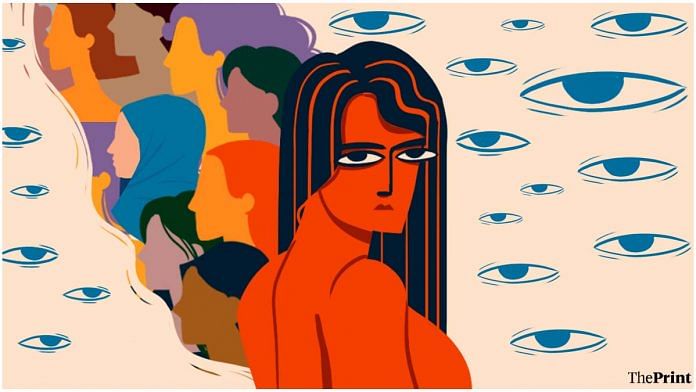I got a call from a friend just as I started writing this article about the significance of Women’s Day today. Is it any different than any other for businesses to sell products we don’t need at discounts? Is this day all about consumption and marketing capitalism? Another excuse for a woman to demand a bouquet?
I could sense her shivering through the phone. She hadn’t slept in days, she said, because of the continued sexual harassment she had been facing at her workplace.
I thought it was near-impossible in a metro city in a post #MeToo world for men to continue to harass colleagues with impunity. It’s not like my friend kept silent, she raised complaints again and again, but she was told by the organisation that: “she’s making a big deal out of nothing”. In the absence of credible statistics, I cite this case.
When a global feminist movement that pioneered leveraging the power of the Internet for revolutions couldn’t put a full stop to sexual harassment, what’s the point of a Women’s Day? And yet, we need it more than ever.
Also Read: Time poverty is making Indian women lose more money than ever
Men hate Women’s Day
To make a frivolous argument — we need Women’s Day because most men resent its existence from the bottom of their hearts.
Men are particularly bitter about how International Men’s Day doesn’t get the attention, Women’s Day does. But they aren’t aware of the historical differences between the two.
Men’s Day was observed by Dr Jerome Teelucksingh of Trinidad and Tobago on 19 November 1999, as a way to honour his dad. It was founded to raise issues facing men and boys.
The international men’s day website mentions there had been protests by men in the US for an international men’s day to be observed on 23 February since the 60s. But this was no celebration of ‘manhood’. The website itself says men wanted a day, only because women had one. Evidently, they weren’t happy with the rest of the 364 days.
So while women’s day comes from a place of fighting disenfranchisement. Men’s day comes from a place of privilege. While the celebration of a man’s birthday was reason enough for the observance of International Men’s day, women had a long drawn fight. First Women’s Day was celebrated in the United States on 28 February in 1909 to honour women protesting conditions in a garment family. On 8 March 1917, Russian women protested against the World War and its resultant food shortages that came to be known as the ‘Bread and Peace’ movement. In 1975, this day was chosen as International Women’s Day, when it was given formal recognition by the United Nations.
One of the first modern feminist movements that called for the mobilisation of women to fight for their rights emerged from an anti-slavery convention in the US in 1848. This is telling of the fact that the feminist movement isn’t simply about women’s rights – it has always been intersectional.
Also Read: Women don’t care for Delhi’s reduced drinking age — they still have to pay high morality tax
The invisible sex
“Should women get reserved seats in buses?” A sociology professor asked a bunch of 18-year-old women. Hardly a hand went up in that 2014 class of the BMM (Bachelor of Mass Media) building in Sophia College, Mumbai.
After all, the argument was: Why should feminist women fighting for equal rights be awarded any privileged treatment?
She then presented a rather unsettling fact. Indian women labour more than the men in an average household: “Think about it, an average woman of a typical household must’ve gotten up at 5 a.m. to send her kids to school, cook lunch for them and her husband, overlooked other domestic chores, and after she had already worked that day for three hours; she must’ve gotten in a bus ‘to start her day’,” I remember my professor saying.
She wasn’t wrong. Even to this day, women spend an average of five hours doing domestic work, which is three times more than men.
So does Women’s Day really help? As surrounded by consumerism it might be at the moment, this day is the celebration of the invisible sex and of all the invisible ways it suffers. We’re required to keep quiet about the things we have to go through and constantly shamed for it too – Got raped? Hide it. It will bring you shame. Period cramps? Sit quietly in your room, or it will bring you shame. Working more than your husband? Shut up, it’s your duty.
Nobody will know what my friend or lakhs of women facing harassment at organised and unorganised workplaces suffer. Nobody will see how women put in way more work for way less pay on a daily basis. For more examples to see how women’s suffering is invisible, read this fantastic story in People’s Archive of Rural India, which documents how women are assigned work on a farm that requires more ‘bending’.
It is easy to forget in the modern era with ‘modern women’, to see just how many biases we’ve to fight on a daily basis, and how many floors down we have to begin our journeys when compared to our male counterparts.
Let there be a day that ruffles the feathers of those who find the feminist movement redundant. Let there be a day which makes many, many people angry. It’s not just about cards and sales and flowers and whatnot; Women’s Day is to remind one and all that gender equality is still a distant dream. And there are miles to go before women sleep.
Views are personal.
(Edited by Srinjoy Dey)



